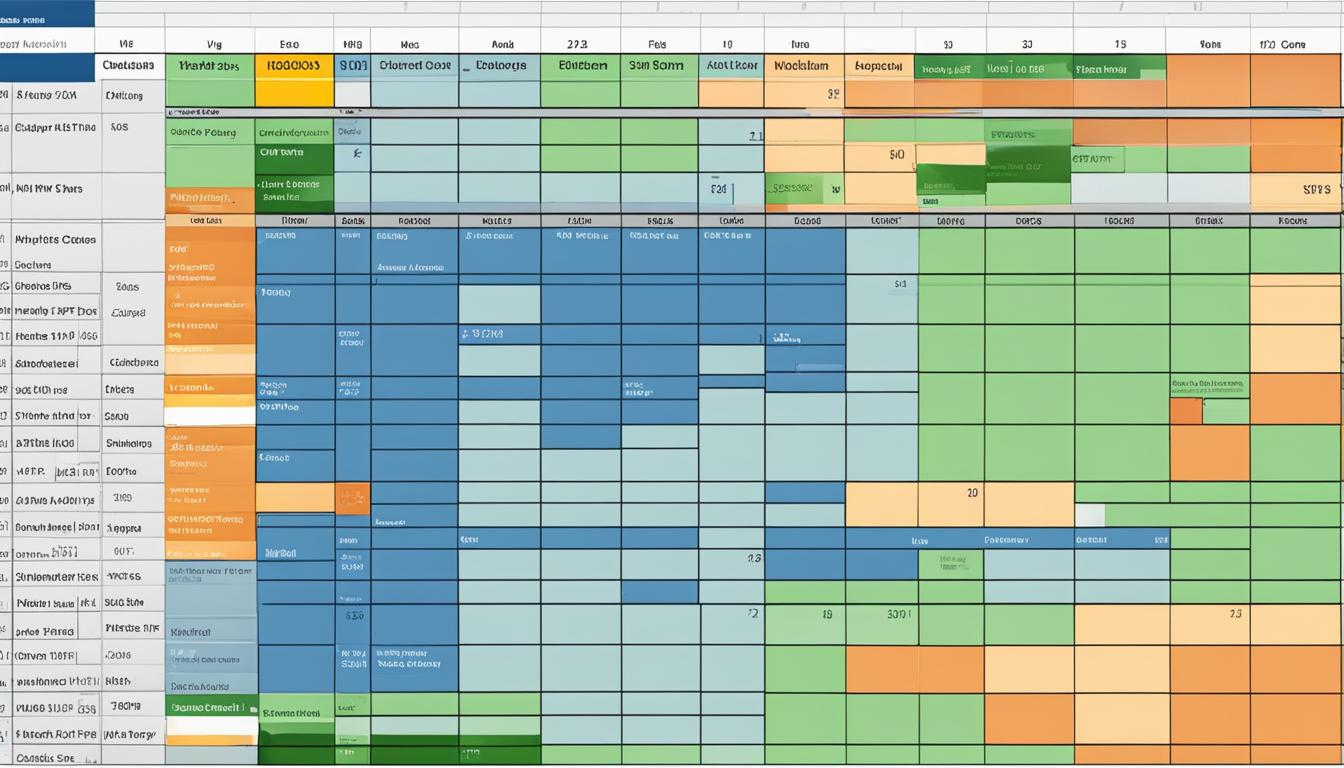Is Algorithmic Options Trading Possible?

Algorithmic options trading, also known as automated options trading, is a strategy that involves using computer programs to automatically execute trades based on predetermined rules and instructions. This approach has gained popularity in recent years due to its potential for high-profit opportunities and the ability to eliminate emotional bias in trading decisions.
But is algorithmic options trading really possible? In short, yes. With the advancement of technology and the availability of sophisticated trading algorithms, traders can now take advantage of automated systems to execute options trades.
Key Takeaways:
- Algorithmic options trading utilizes computer programs to automatically execute trades based on predefined rules.
- This approach eliminates the impact of human emotions on trading decisions.
- Algorithmic options trading offers high-profit opportunities and increased market liquidity.
- However, it is important to carefully consider the risks involved and ensure suitability before engaging in algorithmic options trading.
What Is Algorithmic Trading?
Algorithmic trading, also known as automated trading or algo-trading, utilizes computer programs to execute trades based on defined instructions or algorithms. This approach removes human emotions from the trading process and allows for faster and more frequent trades. In the context of options trading, algorithmic trading strategies can be developed using trading algorithms and machine learning techniques, enabling traders to make data-driven decisions.
Algorithmic trading has revolutionized the financial industry by leveraging technology to analyze data, identify market trends, and execute trades with precision and efficiency. By utilizing advanced algorithms, traders can automate their trading strategies, eliminating the need for manual intervention and optimizing trade execution.
Trading algorithms for options utilize mathematical models and statistical analysis to identify potential trading opportunities. These algorithms consider various factors such as market volatility, historical price patterns, and market liquidity. By analyzing large amounts of data and applying machine learning techniques, trading algorithms can adapt to changing market conditions and make informed decisions.
Machine learning for options trading takes algorithmic trading to the next level by utilizing advanced algorithms that can learn from historical data and make predictions about future market movements. Machine learning algorithms can identify complex patterns and relationships in data, enabling traders to develop predictive models for options trading.
“Algorithmic trading allows traders to execute trades efficiently and objectively, removing the emotional biases that often plague manual trading. By leveraging technology and data analysis, algorithmic trading offers traders a systematic and disciplined approach to options trading.”
In summary, algorithmic trading has transformed the world of options trading by providing traders with automated and data-driven strategies. By utilizing trading algorithms and machine learning techniques, traders can enhance their decision-making process and optimize trade execution.

| Advantages of Algorithmic Trading for Options | Disadvantages of Algorithmic Trading for Options |
|---|---|
| 1. Eliminates emotional biases in trading decisions | 1. Latency in trade execution |
| 2. Enables faster and more frequent trades | 2. Vulnerability to unforeseen market disruptions |
| 3. Provides efficient trade execution | 3. Dependence on technology and potential technical failures |
| 4. Allows for backtesting and optimization of strategies | 4. Influence on market prices and increased volatility |
Advantages of Algorithmic Options Trading
Algorithmic options trading offers several advantages. It leverages the power of artificial intelligence (AI) in options trading, utilizing advanced options trading algorithms to execute trades at precise moments. This enables traders to capitalize on high-profit opportunities that may arise in the market.
One of the key benefits of algorithmic options trading is its ability to increase liquidity in the market. By allowing trades to be executed automatically and at a faster pace, algorithmic trading algorithms contribute to a more efficient market and ensure efficient trade execution.
Another advantage of algorithmic options trading is the potential to lower trading fees. Due to the automation of trades, algorithmic traders can benefit from reduced transaction costs, as compared to manual trading.
“Algorithmic options trading allows traders to backtest their strategies using historical and real-time data.”
This approach also offers the ability to backtest trading strategies using historical and real-time data. Traders can assess the viability of their strategies and make data-driven decisions based on the results of these tests.
However, it is important to note that the profitability of algorithmic options trading depends on various factors, including market conditions, the design of trading algorithms, and effective risk management strategies.
To highlight the advantages of algorithmic options trading, consider the following table:
| Advantages of Algorithmic Options Trading |
|---|
| High-profit opportunities |
| Increased market liquidity |
| Efficient trade execution |
| Lower trading fees |
| Backtesting capabilities |

Disadvantages of Algorithmic Options Trading
While algorithmic options trading offers numerous advantages, it is essential to be aware of the potential disadvantages that come with it. Understanding these drawbacks can help traders make informed decisions and manage their expectations effectively.
1. Latency and Trade Execution Delays
One significant factor to consider in algorithmic trading is latency, which refers to the delay in executing trades. Automated options trading systems rely on computer programs and internet connectivity to execute trades quickly. However, even the slightest delay can impact trading outcomes. Market conditions can change rapidly, and every second counts in the world of finance.
2. Market Disruptions and “Black Swan” Events
Unforeseen market disruptions or unpredictable events, often referred to as “black swan” events, can have a significant negative impact on algorithmic traders. Examples include unexpected market crashes, regulatory changes, or geopolitical events. While these events are challenging to predict, they can result in substantial financial losses if the algorithmic trading system is not equipped to handle such scenarios.
3. Technical Dependencies and Failures
Algorithmic trading heavily relies on technology. Any technical disruptions, system failures, broker errors, or malfunctions can potentially disrupt the trading process and lead to unwanted consequences. It is crucial for traders to have robust backup systems and contingency plans to mitigate these risks.
4. Market Impact and Increased Volatility
Large algorithmic trades can influence market prices and increase volatility. When executed in substantial quantities, these trades can create imbalances in supply and demand, leading to rapid price fluctuations. Algorithmic traders should be mindful of the impact their trades may have on the market, especially when dealing with illiquid assets.
5. Regulatory Requirements and High Capital Costs
Algorithmic trading is subject to regulatory oversight and compliance requirements. Traders must adhere to rules governing fair and orderly markets, risk management, and investor protection. Complying with these regulations may involve substantial time and resources. Additionally, developing and implementing algorithmic trading systems may require significant capital investment for technology, research, and development.
It is important for traders to carefully weigh the potential benefits against the possible disadvantages before engaging in algorithmic options trading. Understanding the risks involved and having a comprehensive risk management strategy in place can significantly enhance the chances of success.
Despite these disadvantages, algorithmic options trading can still be a highly profitable endeavor for knowledgeable and well-prepared traders. Adapting to market conditions, continuous monitoring, and regular evaluation of trading strategies can help mitigate risks and maximize returns.
To illustrate the potential drawbacks of algorithmic options trading, the following table provides a concise summary:
| Disadvantages |
|---|
| Latency and trade execution delays |
| Market disruptions and “black swan” events |
| Technical dependencies and failures |
| Market impact and increased volatility |
| Regulatory requirements and high capital costs |
The potential disadvantages of algorithmic options trading highlight the importance of thorough research, risk management, and constant adaptation. Traders must carefully analyze their strategies, assess market conditions, and remain vigilant to make the most out of this automated trading approach.
Common Mistakes in Algorithmic Options Trading
Traders in algorithmic options trading may encounter common mistakes that can significantly impact their success. By understanding these pitfalls and taking proactive measures to avoid them, traders can enhance their trading strategies and improve their overall performance.
Overcomplicating Trading Strategies
One common mistake is overcomplicating trading strategies by incorporating numerous indicators or rules. While it may seem tempting to add more complexity, it often leads to confusion and ineffective strategies. Instead, traders should focus on simplicity and strive to understand price action and market dynamics. By simplifying their approach, traders can identify clear trading signals and make informed decisions.
Relying Too Heavily on Regressors or Overfitting Data
Another mistake is relying too heavily on regressors or overfitting data. This occurs when traders create models that are overly complex or tailored specifically to historical data, resulting in inaccurate predictions. To mitigate this risk, traders should ensure that their trading algorithms are robust and capable of adapting to various market conditions. Regularly evaluating and refining models is essential to avoid overfitting and enhance predictive accuracy.
Unpreparedness for Technical Issues and Unexpected Events
Technical issues and unexpected events can disrupt the trading process, impacting algorithmic options trading strategies. It is crucial for traders to anticipate and prepare for these challenges. Implementing robust risk management protocols, having backup systems in place, and staying informed about market developments can help mitigate the impact of technical issues and unexpected events.
Failure to Adapt to Changing Market Conditions
In algorithmic options trading, market conditions can change rapidly. Traders who fail to adapt their strategies accordingly may experience suboptimal results. Regularly monitoring and evaluating the performance of trading algorithms is crucial to identify any necessary adjustments. By remaining flexible and responsive to market dynamics, traders can enhance their chances of success.
Evaluation and Strategy Assessment
Overall, evaluating and assessing trading strategies is essential for success in algorithmic options trading. Traders should constantly test and monitor their strategies to ensure they align with changing market conditions. By conducting thorough evaluations, traders can identify strengths and weaknesses, make informed decisions based on data and analysis, and enhance their algorithmic options trading performance.

The Future of Algorithmic Options Trading
As technology continues to advance, the future of algorithmic options trading looks promising. With the advent of artificial intelligence and machine learning, trading algorithms are becoming more sophisticated and capable of analyzing vast amounts of data. These advancements will enhance the capabilities of algorithmic trading systems, providing traders with greater opportunities to profit from the options market.
However, it’s crucial to recognize that algorithms are tools that require careful analysis and evaluation. While algorithmic options trading can be profitable, success is not guaranteed. Traders need to stay informed about market trends, regulatory changes, and technological advancements to navigate the evolving landscape effectively.
By keeping up with the latest developments, traders can leverage options trading algorithms to their advantage. They can identify new strategies, optimize existing ones, and adapt to changing market conditions. Through continuous learning and improvement, traders can increase their chances of profitability in the rapidly evolving world of algorithmic options trading.







